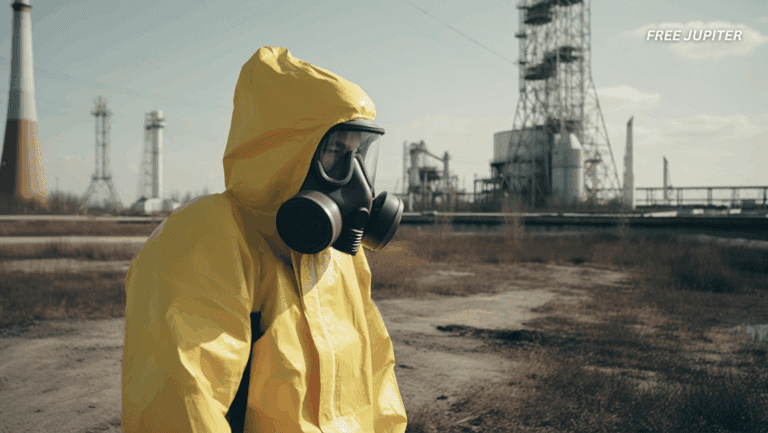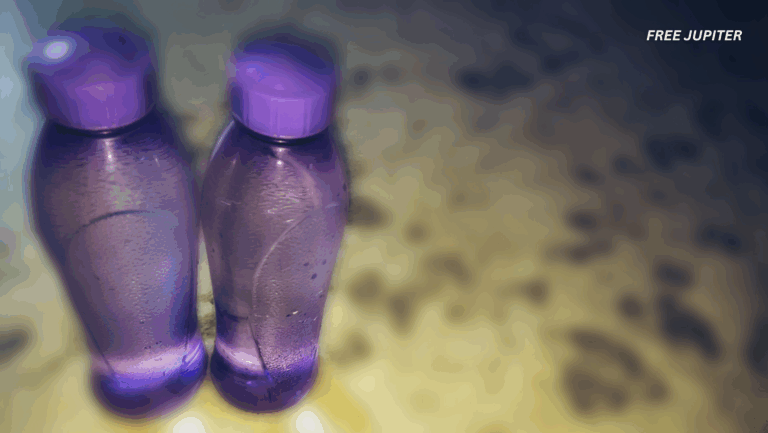Friendly Note: FreeJupiter.com shares general info for curious minds 🌟 Please fact-check all claims—and always check health matters with a professional 💙
What if machines could develop a sense of taste? A team of researchers has created a revolutionary “artificial tongue”—a sensor so precise that it can recognize flavors almost as accurately as a human palate.
At the heart of this technological tongue is graphene, a wonder material just one atom thick, and artificial intelligence, which gives it the brainpower to identify and distinguish complex tastes. This innovation is more than just cool—it could transform industries ranging from food safety to healthcare. Let’s take a deeper look at how it all works and why it matters.
What Exactly Is an Artificial Tongue?
To start, let’s clear something up: the “tongue” in question doesn’t look like a tongue. It’s not pink, squishy, or wet. Instead, it’s a compact, high-tech device that replicates the function of tasting by sensing chemical signals and interpreting them through machine learning.
Think of it as a microscopic flavor detective. Instead of using taste buds like we do, this sensor uses graphene oxide—an extremely thin and sensitive material made from carbon. The graphene is layered into a sophisticated nanofluidic system. When molecules from food or liquids come into contact with the sensor, they alter its electrical conductivity in ways that reflect their flavor profile.
In simple terms, different chemicals make electricity flow through the sensor differently, and that change is a clue about what flavor is being tasted.
Why Graphene? The Secret Sauce
Graphene is often described as a “miracle material,” and for good reason. It’s incredibly thin, incredibly strong, and highly conductive. In this artificial tongue, graphene’s sensitivity makes it perfect for detecting even the tiniest changes in chemical environments. That’s essential when trying to mimic the subtlety of human taste.
Plus, graphene has another huge advantage: it’s stable in humid or wet conditions. This is a game-changer because earlier attempts at taste sensors often failed or gave unreliable results when moisture was present. Our mouths are, after all, pretty wet places. So to replicate real tasting, any sensor has to handle humidity—something this device does remarkably well.
Read more: Scientists Uncover Hundreds of Promising Antibiotic Candidates in Snake and Spider Venom
Training the Tongue: How AI Learns to Taste
Now, sensing flavor molecules is one thing. Interpreting what they mean is another.
This is where artificial intelligence steps in. To teach the device how to taste, researchers created a training dataset of 160 chemicals, each representing a key taste category—sweet, salty, sour, bitter, and umami (the savory flavor you find in things like mushrooms and Parmesan cheese). Think of it as a digital flavor boot camp.
The AI analyzed how each chemical altered the electrical signals in the graphene sensor. Over time, it learned to recognize the unique patterns associated with different flavors.
Once fully trained, the AI-powered tongue achieved an impressive 98.5% accuracy in identifying the familiar flavors it had been exposed to. Even when tested with 40 new, unfamiliar chemicals, it still managed to identify them correctly 75% to 90% of the time. That’s not just a lucky guess—that’s the power of machine learning combined with ultra-sensitive materials.
Taste Buds Meet Circuit Boards: Mimicking the Human Flavor Process
What makes this artificial tongue truly remarkable is how closely it copies what actually happens inside your mouth.
In humans, taste buds detect molecules and send electrical signals to the brain, which interprets them as flavor. This device does essentially the same thing: it detects molecular interactions and sends electrical data to an AI “brain” for interpretation.
But unlike humans, it doesn’t need time to develop taste preferences. It doesn’t get tired, biased, or distracted by texture or aroma. It’s a pure, focused taster—scientifically consistent and lightning-fast.
Read more: AI Tool ChatGPT Accurately Diagnoses Child After Dozens of Experts Miss It Over Three Years
Real-World Uses: Why Would Anyone Build a Machine That Tastes?
The idea of a robot that can taste might sound amusing, but it actually solves some serious real-world problems. Let’s explore a few potential applications:
🧪 Food Safety and Quality Control
Food manufacturers need to ensure that every batch of a product tastes the same. An artificial tongue could quickly test and verify flavor profiles during production, spotting contamination or recipe deviations instantly.
🏥 Medical Diagnostics
Yes, you read that right—tasting could help diagnose diseases. Certain health conditions can change the chemical composition of saliva, blood, or even urine. This sensor could “taste” those fluids and detect early signs of illness based on chemical imbalances.
🤖 Robotics and Automation
Imagine a robot chef that can season food to perfection by actually tasting it. Or a smart home device that alerts you when your milk has gone sour. This tech could give machines a literal sense of taste, enhancing how they interact with the world.
🌱 Environmental Monitoring
Beyond food and medicine, this tongue could detect chemicals in water or air that indicate pollution, helping us monitor the environment more effectively.
The Road Ahead: From Bulky Prototype to Pocket-Sized Tool
Right now, the sensor is still in the early stages—a bulky prototype that wouldn’t fit on your kitchen counter, let alone inside a gadget. But researchers are already working on shrinking it down.
The ultimate goal? A sleek, portable device that can be embedded in tools used by doctors, chefs, researchers, or even astronauts. Imagine a taste sensor onboard a spacecraft to check the safety and quality of food in zero gravity.
The combination of ultra-thin graphene and the learning capabilities of AI opens the door to endless possibilities. While it’s not yet ready to replace your grandma’s taste buds, it’s a leap toward a future where machines can detect flavors, identify health markers, and even help shape the food we eat.
Read more: Experts Say Human DNA Can Be Hacked—and May Be the Next Cybersecurity Threat
Final Bite: What This Tells Us About Tech and Taste
This artificial tongue is more than just a scientific novelty. It shows how far we’ve come in blending biology with technology. By mimicking the complexity of the human sensory system using carbon atoms and algorithms, researchers are creating machines that don’t just do things—they sense things.
Whether it ends up in a robot kitchen, a hospital lab, or a high-tech food factory, this quirky yet elegant invention is proof that even our most human experiences—like tasting something delicious—can be broken down, studied, and rebuilt from the ground up.
So the next time you enjoy your favorite snack, just remember: somewhere in a lab, an artificial tongue might be tasting it too.










